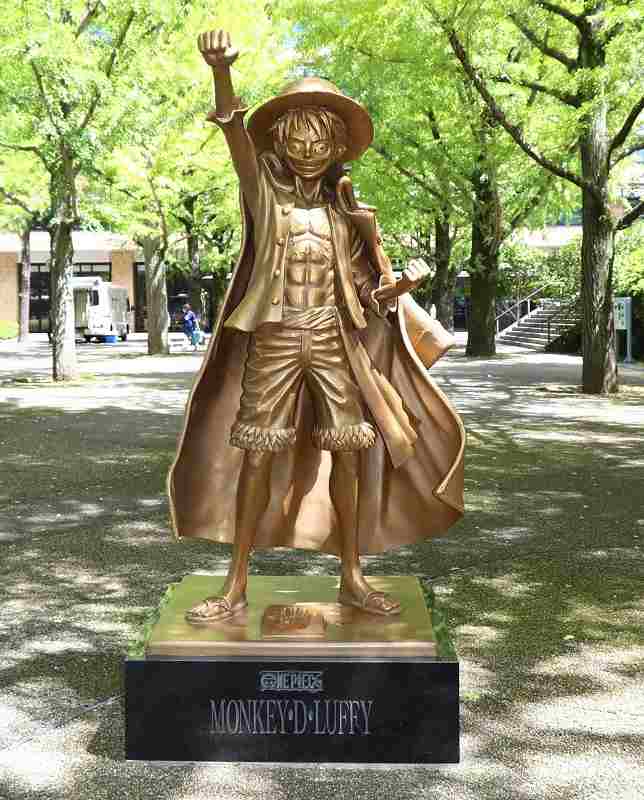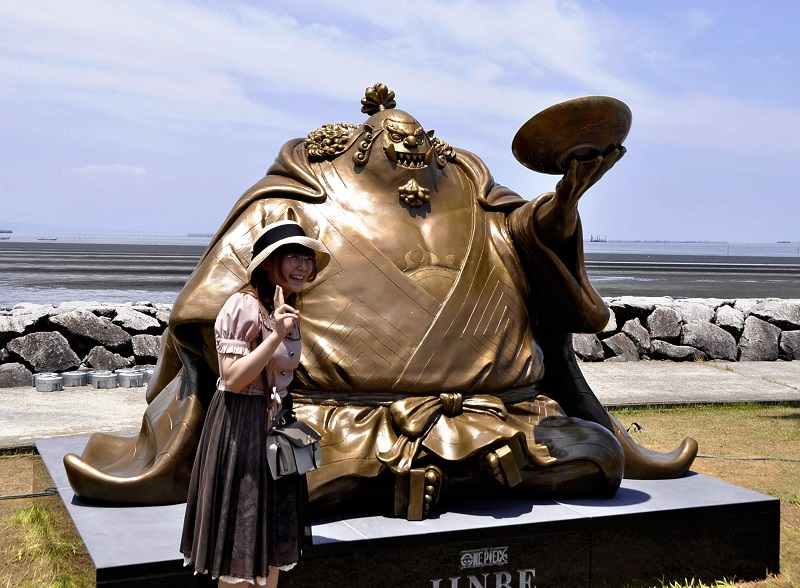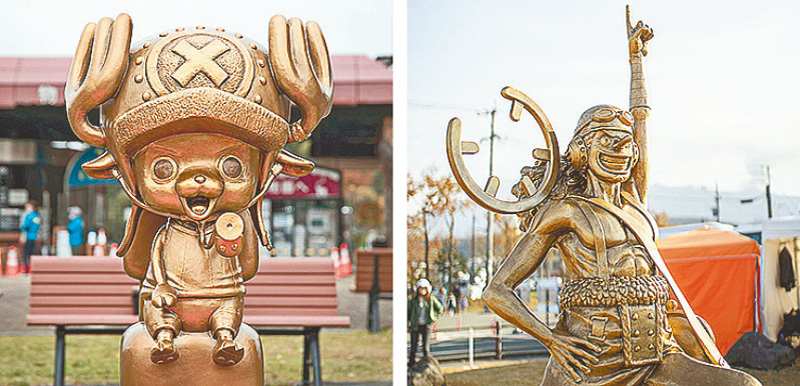‘One Piece’ statues serve as symbol of Kumamoto Pref. quake recovery

A statue of Luffy, the main character in the “One Piece” manga series, is seen in front of the Kumamoto prefectural government building in Chuo Ward, Kumamoto City, on Thursday.
11:00 JST, August 2, 2022
KUMAMOTO — Fans of the manga series “One Piece” are flocking to Kumamoto Prefecture to see statues of characters from the popular franchise. Ten statues depicting various members of the Straw Hat Pirates have been installed in the prefecture. The representation of the series’ protagonist, Luffy, is said to have alone generated an economic ripple worth around ¥2.7 billion, and the prefecture intends to utilize the statues as a symbol of recovery from the 2016 Kumamoto earthquakes.
“One Piece” began in 1997 in the weekly magazine Shukan Shonen Jump, published by Shueisha Inc. Luffy, who aspires to become Pirate King, embarks on an adventure with the Straw Hat Pirates in search of the legendary One Piece treasure. The manga series has been distributed in more than 57 countries and regions and has shifted more than 490 million copies.
A 2.2-meter-tall statue of crew helmsman, Jinbe, was unveiled July 23 at a park in Uto, which faces the Ariake Sea. “I’m glad I came,” said Emi Onishi, a Japanese-language teacher sporting a Luffy-inspired straw hat who was visiting the park. “I plan to visit all the statues over three days.”

A “One Piece” fan poses for a photo in front of a statue of Jinbe in Uto, Kumamoto Prefecture, on July 23.
The prefecture launched its project to install the statues in 2018, and to date, gold-colored likenesses have been placed in nine municipalities that suffered particularly severe quake damage. The project is funded by an ¥800 million donation toward reconstruction efforts from “One Piece” creator and Kumamoto City native Eiichiro Oda.
A statue of Sanji, the cook, can be found in Mashiki, which was struck twice by earthquakes measuring the maximum 7 on the Japanese seismic intensity scale — the first such double event in Japan’s recorded history — and Nami, the navigator, in Nishihara, where more than half the houses in the village were partly or completely destroyed.
A research team from Shokei University in Kumamoto City estimated that the statue of Luffy — the first in the project — placed at the prefectural office attracted some 55,000 visitors in 2019. The team also calculated that tourism-related accommodation, food and drink sales, and advertising generated about ¥2.67 billion.
The Kumamoto Earthquake Museum in Minami-Aso attracted more than 9,000 visitors last October when the statue of archaeologist Robin was installed — more than three times the previous visitor record. “‘One Piece’ offers a great opportunity for people to learn about the disaster,” said Masahiro Hosoda, a guide at the museum.
Mini figurines that went on sale July 23 have already sold out. Shueisha and the prefectural government are currently formulating guidelines for the development of statue-related products, and plans are in the pipeline for local businesses to develop tours and official merchandise.
The prefecture has received multiple inquiries from travel agencies interested in creating tours. “We have a collection of statues that can only be found in Kumamoto,” said a project official. “We hope that ‘One Piece’ will serve as a catalyst for people to learn about the charms of Kumamoto, and help attract people to the area, which will help contribute toward reconstruction efforts.”

A statue of Chopper is seen in Higashi Ward, Kumamoto City, left, A statue of Usopp is seen in Aso City.



